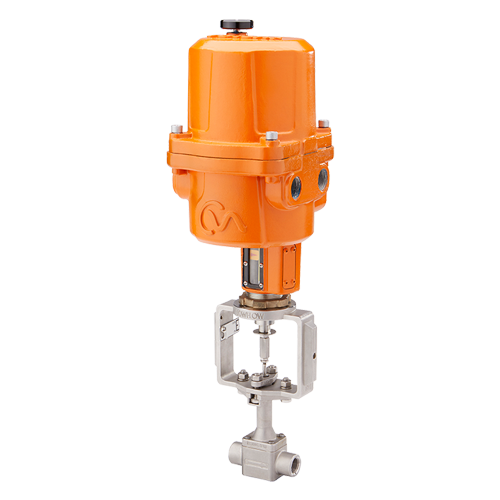Comprehending the Value of Control Valves in Process Automation
Comprehending the Value of Control Valves in Process Automation
Blog Article

Maximize Power Cost Savings and Comfort With Advanced Building Automation Controls
In the realm of modern-day style and facility management, the assimilation of sophisticated building automation regulates stands as an essential improvement. The convergence of modern technology and sustainability has birthed a new period where energy efficiency, convenience optimization, and operational streamlining are no much longer possible truths but remote goals. By harnessing the power of automation, structures can adapt, respond, and evolve in manner ins which were once unimaginable. The capacity for significant power savings and improved comfort is not simply a pledge but an opportunity waiting to be satisfied. This standard shift in building management holds the essential to opening a world where environmental conscientiousness and owner well-being sympathetically coexist within the wall surfaces of our frameworks.
Power Efficiency Perks
Power efficiency benefits can substantially reduce power intake and operational costs in buildings. By carrying out energy-efficient techniques and modern technologies, building owners and operators can achieve considerable cost savings while likewise adding to ecological sustainability. Among the key benefits of improving energy efficiency in buildings is the decrease of energy costs. Energy-efficient systems, such as advanced building automation controls, can maximize using sources like air conditioning, heating, and lighting, bring about lower power expenditures over time.
Furthermore, enhanced power effectiveness can lengthen the life expectancy of building tools and systems. By running more successfully, HVAC systems, light, and other structure elements experience much less deterioration, resulting in minimized maintenance and substitute costs. In addition, energy-efficient buildings usually command greater home worths and rental rates, giving long-term economic benefits to proprietors.
Furthermore, power performance can improve owner comfort and efficiency. Properly controlled interior environments with optimum lighting and thermal conditions produce an even more enjoyable and helpful workspace, resulting in boosted employee satisfaction and efficiency. In general, the energy effectiveness benefits associated with sophisticated structure automation controls are diverse, incorporating cost savings, environmental stewardship, and passenger health.
Enhanced Comfort Control
Enhancing convenience control in structure settings calls for an advanced assimilation of advanced automation systems for ideal resident well-being. By utilizing sophisticated structure automation controls, centers can tailor the interior environment to meet the specific requirements and choices of residents. control valves.
By incorporating these innovative controls, buildings can not only boost comfort however additionally enhance power efficiency by maximizing system operations based on real tenancy and usage patterns. Eventually, focusing on occupant comfort via advanced automation systems leads to a much more delightful and healthier indoor atmosphere.
Functional Efficiency Improvements

Moreover, the application of real-time monitoring and analytics devices allows building operators to recognize power inadequacies and functional anomalies without delay. By constantly keeping track of power usage patterns and system efficiency metrics, changes can be made in real-time to enhance power usage and ensure peak operational performance. control valves. In addition, incorporating need action strategies into building automation controls can better improve functional effectiveness by dynamically readjusting power usage based on grid problems and rates signals
Indoor Environment Optimization
Reliable indoor climate look here optimization is a basic element of structure automation controls, ensuring passengers' convenience and health while maximizing power cost savings. By using innovative sensing units and controls, constructing automation systems can continually readjust and check temperature level, moisture degrees, air high quality, and air flow to produce an optimal indoor environment. Keeping regular and comfy conditions not just boosts owner satisfaction yet additionally improves performance and general wellness.
Interior environment optimization likewise plays a vital function in energy performance. By fine-tuning ventilation, home heating, and cooling systems based upon real-time information and occupancy patterns, building automation controls can significantly lower power consumption - control valves. Applying methods such as demand-controlled ventilation and thermal zoning can help decrease power waste while making certain that each area of the building obtains the essential conditioning.

Sustainable Environment Development
Structure automation regulates not only maximize interior climate conditions for energy performance and resident comfort yet also lay the foundation for developing a sustainable environment through critical monitoring of systems and resources. By incorporating sophisticated building automation technologies, such as sensors, actuators, and smart software application, facilities can keep track of and readjust energy use in real-time to reduce waste and reduce their carbon impact. These systems allow predictive upkeep, determining potential issues before they rise and optimizing equipment efficiency to improve durability and efficiency.
Furthermore, lasting setting production prolongs past energy management to incorporate water preservation, waste reduction, and indoor air top quality enhancement. Structure automation controls can control water use, identify leakages, and make sure proper garbage disposal methods, adding to overall sustainability efforts. In addition, by checking and controlling ventilation and filtering systems, these technologies improve owner health and efficiency while lowering energy usage related to heating and cooling procedures.
Conclusion
In final thought, progressed building automation manages deal considerable advantages in terms of power cost savings, convenience control, operational efficiency, interior environment optimization, and developing a lasting atmosphere. By carrying out these controls, buildings can attain ideal efficiency while decreasing power consumption and enhancing owner comfort. It appears that making use of advanced automation innovation is important in boosting structure efficiency and developing an extra lasting future.
Power performance advantages can considerably decrease energy usage and operational costs in buildings. In general, the energy efficiency benefits linked with innovative structure automation controls are complex, incorporating price financial savings, environmental stewardship, and occupant health.
Furthermore, integrating demand action methods into building automation controls can further boost functional effectiveness by dynamically changing energy use based on grid conditions and prices signals.
Building automation regulates not our website just maximize interior climate conditions for energy effectiveness and resident comfort but additionally lay the foundation for producing a sustainable setting via calculated administration of resources and systems.In final thought, progressed building automation regulates offer substantial benefits in terms of power financial savings, comfort control, functional effectiveness, interior climate optimization, and developing a sustainable setting.
Report this page